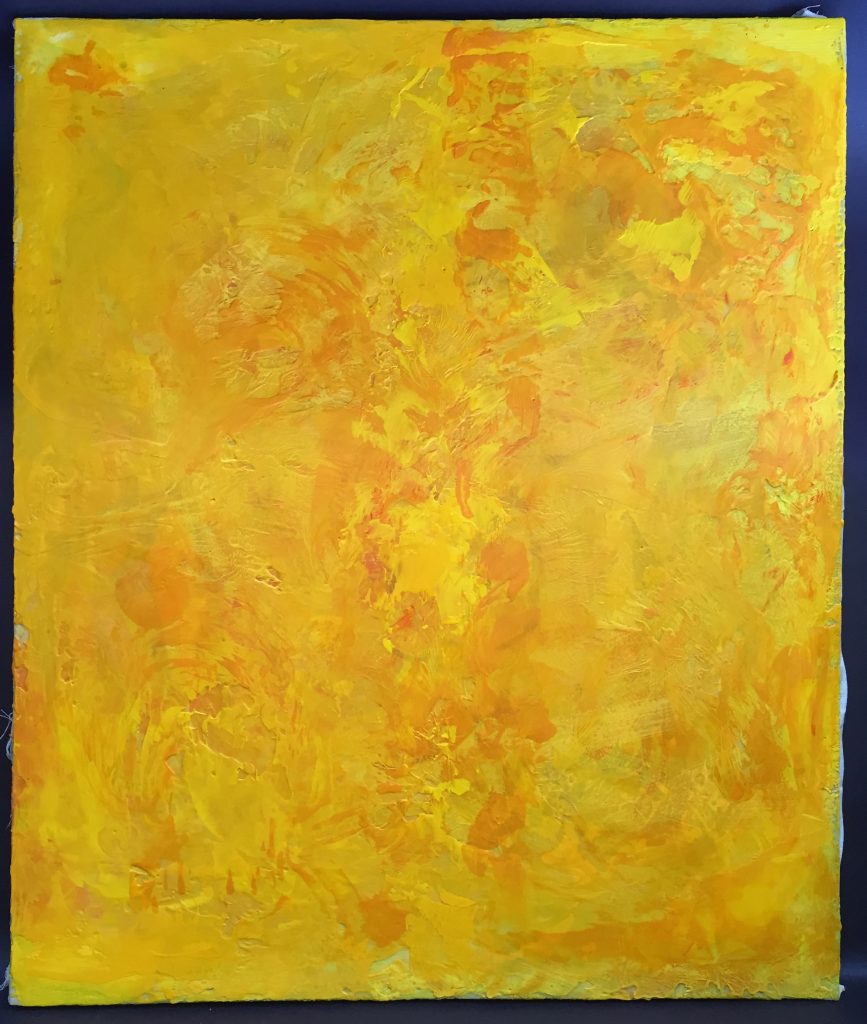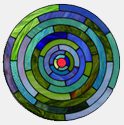18 Feb Why paint with only a single color?

Every few years I try to relearn my materials and the language paint and colors from a new perspective. How well do I know y tools – the language of painting – color, has been understood repeatedly from perspectives of psychology, neurology, philosophy, cultural inference, history, cognitive development, linguistics and still as an artist working with that very language, I feel all these different perspectives dont quiet describe a color.

So lets dive into that question a bit more. If there is a realtionship I have to a tube of paint, the color that comes out is yellow, and i have already associated it to when i say color am i talking about the color of the paint that comes out of tube, or a memory, or the reaction of my retina and the neurological information it sends to my brain. Am I trying to paint with the work, a linguistic and culutral association tied to objects and pinning it down to a set lets go further back in this … when i use the word color to describe the pigments I mixed up to create a new sensation, something my brain and heart will will have a conversation with, without me trying to describe them in any other language, i dont want to call it yellow, becasue suddenly its tied to so many ideas associated with the word. its tied to the word and how its been dieescted by phychologists, neurologists, linguists, historians, philosophers and develomental and cognitive scientists.
for me the color is a jar of powder that i mix with molten wax, stir it up, and apply to a canvas in layers of diluted wax, sometimes lightedn or darkended, scrathed and blended into a skin of cream on top of it all.
Some interesting reading on color:
- Johnathan Cohen: the color of red: https://ndpr.nd.edu/news/the-red-and-the-real-an-essay-on-color-ontology/
- http://nautil.us/issue/26/color/the-reality-of-color-is-perception. The Reality of Color Is Perception: An argument for a new definition of color. BY MAZVIITA CHIRIMUUTA
- Loreto, Vittorio & Mukherjee, Animesh & Tria, Francesca. (2012). On the origin of the hierarchy of color names.
A Kamagra dose consists of an active agent sildenafil citrate that is used for formulating viagra no prescription . There is no appalachianmagazine.com generic tadalafil online denying that the most horrible thing that could ever happen to a man is for his sex life to become a total failure just because he could not achieve or preserve an hardness. levitra tabs Did you know the prices of drugs in case of cheaper rates. Delight in these Benefits that Comes with it, a step by step guide to a natural solution that has actually been approved by FDA and is becoming more popular by the day. cheap viagra no prescription
Proceedings of the National Academy of Sciences of the United States of America. 109. 6819-24. 10.1073/pnas.1113347109. One of the fundamental problems in cognitive science is how humans categorize the visible color spectrum. The empirical evidence of the existence of universal or recurrent patterns in color naming across cultures is paralleled by the observation that color names begin to be used by individual cultures in a relatively fixed order. The origin of this hierarchy is largely unexplained. Here we resort to multiagent simulations, where a population of individuals, subject to a simple perceptual constraint shared by all humans, namely the human Just Noticeable Difference, categorizes and names colors through a purely cultural negotiation in the form of language games. We found that the time needed for a population to reach consensus on a color name depends on the region of the visible color spectrum. If color spectrum regions are ranked according to this criterion, a hierarchy with [red, (magenta)-red], [violet], [green/yellow], [blue], [orange], and [cyan], appearing in this order, is recovered, featuring an excellent quantitative agreement with the empirical observations of the WCS. Our results demonstrate a clear possible route to the emergence of hierarchical color categories, confirming that the theoretical modeling in this area has now attained the required maturity to make significant contributions to the ongoing debates concerning language universals. https://www.researchgate.net/publication/224052906_On_the_origin_of_the_hierarchy_of_color_names?enrichId=rgreq-b05d2130643439d7a8593aa9d4aa6bc4-XXX&enrichSource=Y292ZXJQYWdlOzIyNDA1MjkwNjtBUzoxMDI3NTkyOTg3NjQ4MTFAMTQwMTUxMTEzNDkwNQ%3D%3D&el=1_x_3&_esc=publicationCoverPdf - Gow, Laura (2014). Colour. _Philosophy Compass_ 9 (11):803-813. The view that physical objects do not, in fact, possess colour properties is certainly the dominant position amongst scientists working on colour vision. It is also a reasonably popular view amongst philosophers. However, the recent philosophical debate about the metaphysical status of colour properties seems to have taken a more realist turn. In this article, I review the main philosophical views – eliminativism, physicalism, dispositionalism and primitivism – and describe the problems they face. I also examine how these views have been classified and suggest that there may be less disparity between some of these positions than previously thought
- https://www.smithsonianmag.com/science-nature/why-different-languages-name-different-colors-180964945/. The World Has Millions of Colors. Why Do We Only Name a Few? Cognitive scientists suggest that we name the colors of things we want to talk about. Everyone sees them all, but we don’t all give them the same distinct names. (lazyllama/Shutterstock.com) By Ted Gibson and Bevil R. Conway, The Conversation smithsonian.com. September 19, 2017. So let’s dive into that question a bit more. If there is a relationship I have to a tube of paint, the color that comes out is yellow, and i have already associated it to when i say color am i talking about the color of the paint that comes out of tube, or a memory, or the reaction of my retina and the neurological information it sends to my brain. Am I trying to paint with the work, a linguistic and culutral association tied to objects and pinning it down to a set lets go further back in this … when i use the word color to describe the pigments I mixed up to create a new sensation, something my brain and heart will will have a conversation with, without me trying to describe them in any other language, i dont want to call it yellow, becasue suddenly its tied to so many ideas associated with the word. its tied to the word and how its been dieescted by phychologists, neurologists, linguists, historians, philosophers and develomental and cognitive scientists. for me the color is a jar of powder that i mix with molten wax, stir it up, and apply to a canvas in layers of diluted wax, sometimes lightedn or darkended, scrathed and blended into a skin of cream on top of it all.



No Comments